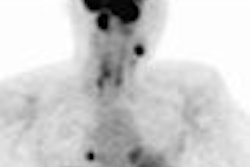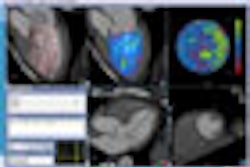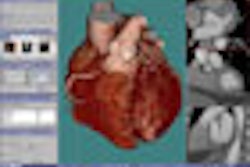Dear AuntMinnie Member,
U.S. researchers are investigating a new radiopharmaceutical for atherosclerosis imaging that could prove useful in future hybrid imaging technologies like PET/MRI.
That's according to a new story we're featuring in our Molecular Imaging Digital Community by staff writer Wayne Forrest. The article describes how a research group at Massachusetts General Hospital in Boston developed the tracer, which uses a nanoparticle attached to a copper-64 isotope, and tested its ability to detect inflammation, a catalyst behind events such as atherosclerosis, plaque rupture, and thrombosis.
In PET/CT studies, the researchers found that the radiotracer attached to areas of high plaque load, as evidenced by high uptake in those regions. In contrast, FDG uptake was lower in certain anatomic areas. Get the rest of the details by clicking here.
In another article in the community, staff writer Kate Madden Yee reports on a study by researchers from Taiwan on the use of FDG-PET for staging nonkeratinizing nasopharyngeal carcinoma (NPC). The group compared the modality to conventional workup using other modalities -- learn what they discovered by clicking here, or visit our Molecular Imaging Digital Community at molecular.auntminnie.com.
In other news, a long-awaited civil trial is about to begin in the case of Michael Colombini, a 6-year-old boy who was killed in 2001 while undergoing an MRI scan at a New York hospital. Colombini died after being struck in the head by an oxygen tank that was brought into the MRI suite and drawn into the magnet bore; the incident has become a sad lesson on the importance of MRI safety.
His parents are suing the hospital and other parties they claim were involved in the incident, and a trial date has been set. Get the rest of the details in our MRI Digital Community by clicking here.




















